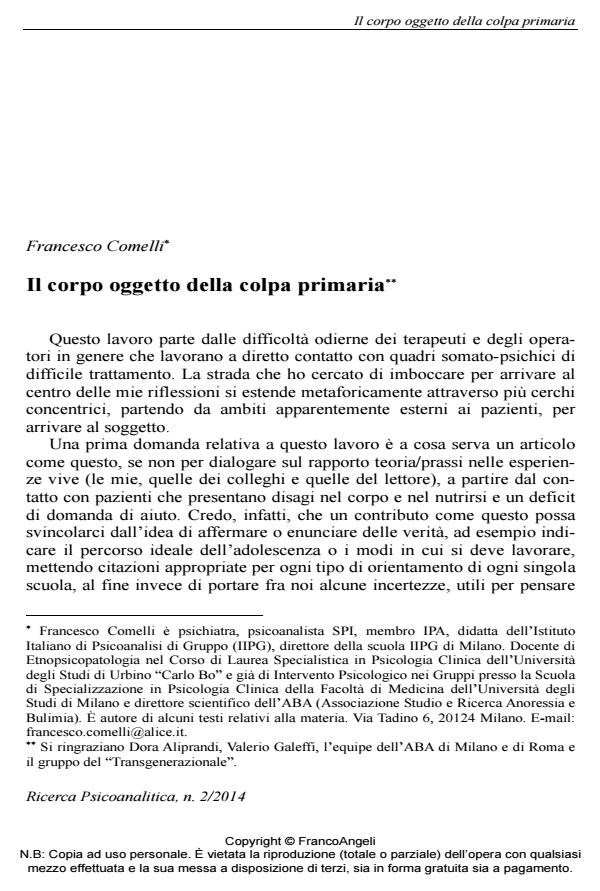The body object of primary guilt
Journal title RICERCA PSICOANALITICA
Author/s Francesco Comelli
Publishing Year 2014 Issue 2014/2
Language Italian Pages 24 P. 47-70 File size 643 KB
DOI 10.3280/RPR2014-002004
DOI is like a bar code for intellectual property: to have more infomation
click here
Below, you can see the article first page
If you want to buy this article in PDF format, you can do it, following the instructions to buy download credits

FrancoAngeli is member of Publishers International Linking Association, Inc (PILA), a not-for-profit association which run the CrossRef service enabling links to and from online scholarly content.
The paper treads a pathway going from the current relation between psychopathology and culture and identifies some traits expelled by the cultural containers and dumped in the psychopathology of today’s masses. Among these elements we find the repression of the negative, the denial of death and the positive evaluation of a conformist positive that substitutes the work of individual perception or the work of alpha dreams (Bion). In this scenario the body becomes a container of mental functions that are no longer experienced by the mind. It is possible that these emotional mass attitudes enter the caring relationship and become scenarios where the feelings that are incompatible with the maternal are experienced as primary guilt and can be potentially destructive of the container/self union that contains the self. Starting from this basis, the author suggests possible therapeutic devices, based on group dynamics for individual and group treatments that mirror the subject. Some modes of work are crossexamined in order to move from the body as a container of the mind to the mind as a tool for bearing pain.
Keywords: Body, negative, guilt of pain, culture-psychopathology, therapeutic devices
Francesco Comelli, Il corpo oggetto della colpa primaria in "RICERCA PSICOANALITICA" 2/2014, pp 47-70, DOI: 10.3280/RPR2014-002004